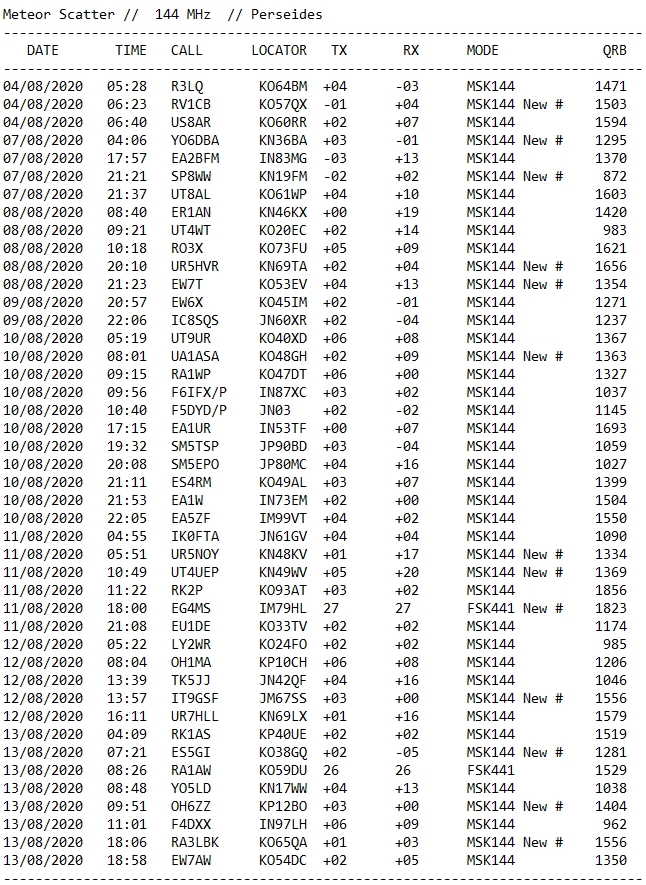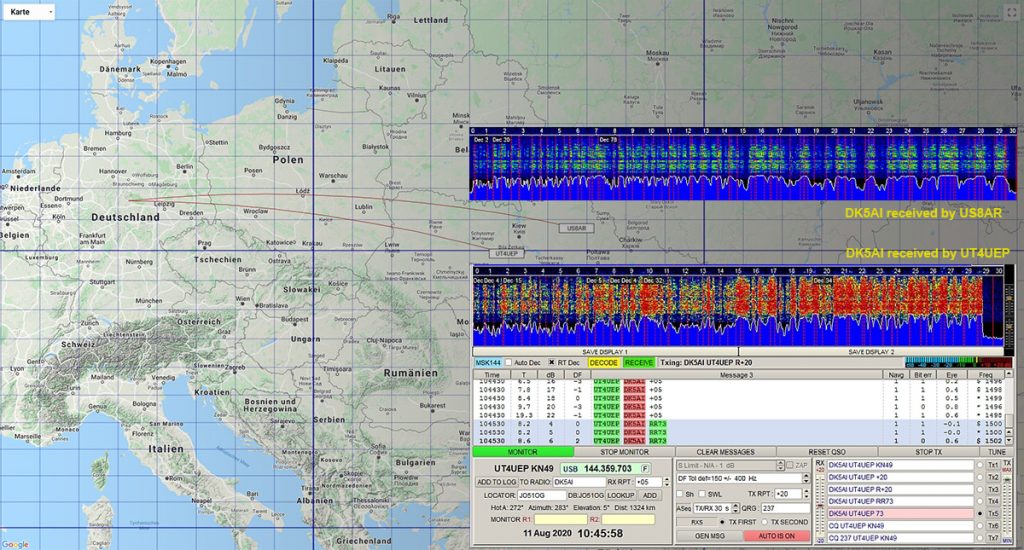The Perseids come around once a year in mid-August, when the Earth passes through a trail of comet dust on its way around the sun. The dust burns up in the Earth’s atmosphere and ionizes the E-layer. The Perseids are caused by debris from comet 109P / Swift-Tuttle, which loops around the sun on a 133-year orbit.
This year they should peak on Wednesday, Aug. 12 between 0800 and 2100 UTC. The Perseids typically deliver up to 110 meteors per hour at their peak. According to scientific predictions, the reflection numbers should start to rise again in 2027.
After a two-year absence, I decided to be active on 144 MHz this year for the Perseids Meteor shower. At the end a total of 44 QSOs could be logged, including 13 new QTH locators. In retrospect, I have to say that the shower had significantly worse reflections this year compared to previous years.



This picture shows my signal, recorded by Nick US8AR in KO60RR and Andy UT4UEP in KN49WV. It is the same burst with a duration of over 30 seconds, recorded by both on August 11, 2020 at 10:45:30 UT. Thanks to Nick and Andy for these interresting screenshots.
